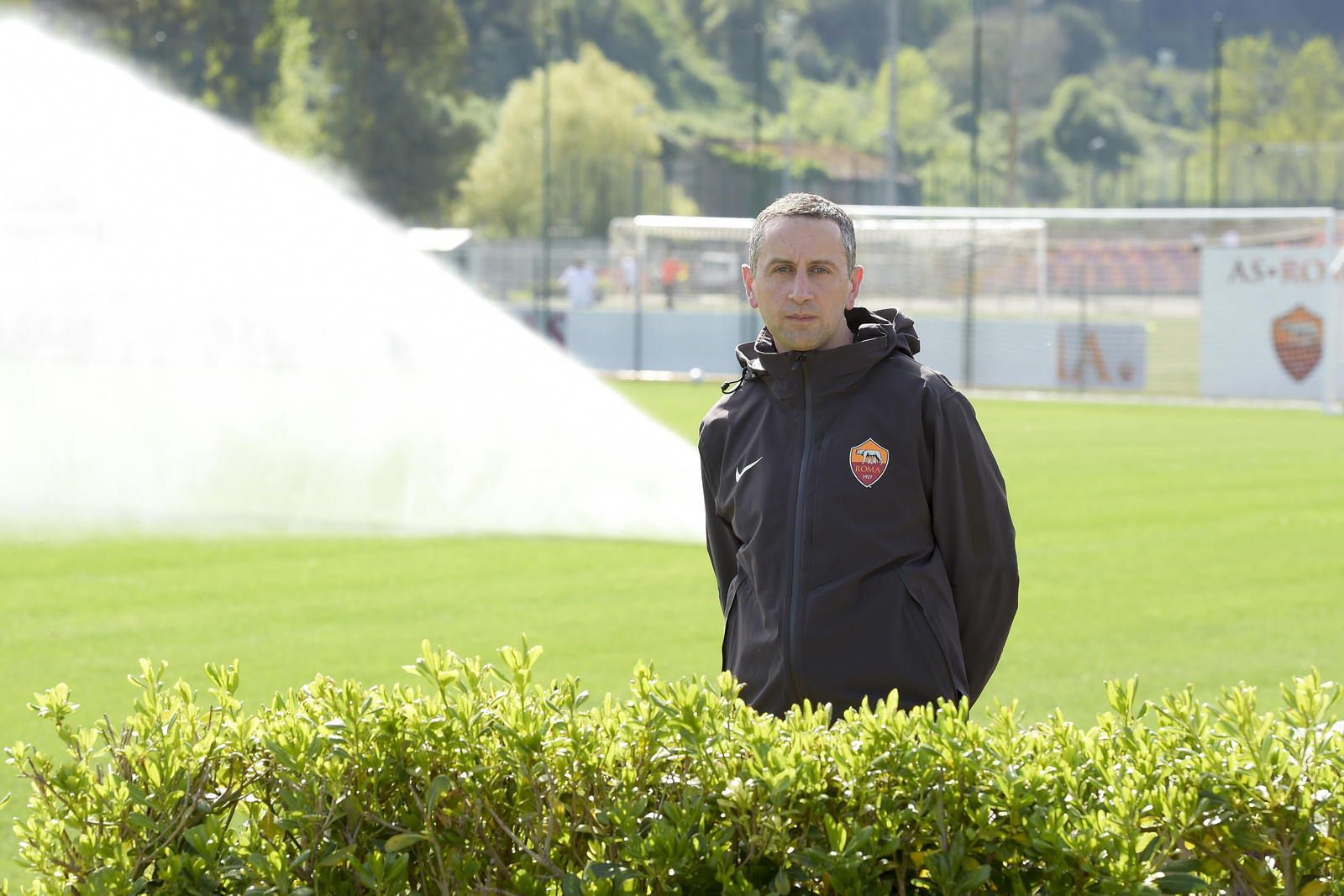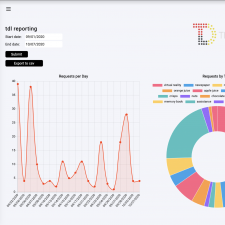Roma’s Digital Revolution
Technology has become a crucial element of modern sport and football has embraced it more than most.
AS Roma remain one of Italian football’s most distinctive and successful clubs, with over 90 years of Serie A history behind them. They play their home matches at the Stadio Olimpico, Italy’s second-largest ground with a capacity of 72,000 and one they share with city rivals Lazio.
But their fan base extends far beyond the stadium’s capacity, with millions of followers across the globe. Keeping in touch with that fan base is a key element of the club’s strategy and we were fortunate enough to speak to Paul Rogers, their Head of Digital and Social Media to discuss their distinctive approach to the medium.
Innovation is very much about utilising the technology at your disposal to the best effect. Can you tell us a little about your approach to your role as Head of Digital and Social Media?
“My role is all about trying to make fans feel closer to AS Roma. We’re using digital platforms to reach and engage with millions of fans – and also potential new fans – all over the world and everything we do has to start with putting the fan first. Whenever we do anything content related, we always ask ourselves these three questions: Is this interesting? Is this entertaining? Is this helpful? If the answer is no, we’re not doing it right.”
How many people do you have in your team?
“In terms of full-time, digital-only staff, it’s about six across our Italian and English websites and social media platforms – but we’re also able to tap into the resources of Roma Studio, which encompasses the club’s television channel and radio station, both based at the team’s training complex. We also have a fantastic team of international correspondents all over the world who help us to localize content every day, including digital teams in Cairo and Jakarta.”
How important do you think social media is to sporting organisations like Roma?
“It’s incredibly important but to me though, it’s now simply part and parcel of what a sports team does and is expected to do. I can’t think of many brands who aren’t using social media in one way or another. I was actually working in football before social media existed and back then fans would only be able to communicate online with each other on forums and in chat rooms. In those days, which seem a long time ago now, it was very difficult for fans to connect or communicate with the club or players. Social media has changed all that and now the barriers between clubs, players and fans have been removed. That’s a great thing.”

Paul Rogers, Head of Digital and Social Media at AS Roma
Your announcements on social media have certainly caught the imagination. Where did the inspiration come from?
“I’m not sure it’s possible to single out one particular thing that inspired them, as they were all different, but I guess they all reflected modern day internet culture in one way or another. We intentionally set out to do something very different to what other clubs were doing as we wanted people to sit up and notice. We went out of our way to create videos that were a little bit weird and would get people talking.
“In fact, as the summer went on, we increased the weirdness factor! We started the summer with a pretty cool announcement video featuring a new signing playing himself on FIFA 17, as we’d recently launched an eSports team, and we ended the summer with a video featuring a typing monkey, a singing lion and a chess-playing goat and we didn’t even bother to include the new player in the video. I think the general reaction was, ‘WTF!’”
What have been Roma’s most successful social media campaigns and how do you measure those successes?
“We measure success on social media in different ways, depending on the objective of the particular campaign or idea but ultimately it’s about engagement and interactions. For me personally, a ‘share’ is worth double a ‘like’ or a ‘view’. We want to make content that people – our fans, our followers and even those who wouldn’t say Roma was their first or favourite team – want to share with their own followers.
“The summer transfer video announcement campaign was all about creating some noise in a very conjected transfer market, showing the football world that Roma has a unique personality and doesn’t take itself too seriously. Football is supposed to be fun but sometimes with all the anger on social media and talk of net-spends, contract clauses and financial fair play, you’d never know that. We wanted to inject some fun back into things.
“However, our most successful social media campaign was probably what we did to say farewell to Francesco Totti after 25 years as a player with Roma. We set out to make very emotive content that would touch people – not just Roma fans – and that resulted in new records set on every platform we measure – from Snapchat and Instagram to Facebook, Twitter and even our own website.
“The content did so well on Facebook – 73 million video views in seven days and over 800,000 shares – that Facebook themselves made a case study out of the campaign. In May 2017, the month Totti retired, despite having less than nine million Facebook followers, Roma outperformed every football club in the world in terms of video views on the platform. When you consider that some clubs have over 100 million followers on Facebook, that’s pretty good.”
Have you found any other teams copying your approach?
“I don’t know if anyone copied what we were doing with transfer video announcements but things certainly got stranger as the summer went on and the player announcement videos became more and more bizarre. Our video to announce Kolarov talked about a player being kidnapped and then Sevilla actually went and did just that – kidnapped a new signing for a video. I thought it was brilliant. We saw a summer of incredible creativeness by football clubs and that benefits everyone. I think there was a sort of unspoken competition amongst clubs to make the best videos and that meant the bar was raised. Clubs like Southampton, Swansea, Sevilla, Besiktas, West Ham, Aston Villa and even lower-league teams like Yeovil Town produced amazing content.”
Can you highlight any campaigns that didn’t quite come off as you had expected?
“If you try and push the boat out and do something different, then chances are you’ll get it wrong as often as you get it right. We constantly try new things and a lot of the time they don’t work or they don’t work as well as you’d hope. If you are a big brand and try and use humour for example, then it can be very tricky – as what’s funny to one person, is not necessarily funny to another. I think in a lot of cases it’s about timing and judging the mood of the fan base. If you are going through a tough time on the pitch, then everything you do is a little bit more difficult and you must respect the feeling of fans. But, ultimately, I’d like to think that we are brave and sometimes you just have to do what you think is right and stick to your guns.
“On social media, you will always have haters and detractors. If a rival fan tweets that we should delete something, we don’t concern ourselves with that because sport is all about rivalry. The goal is to deliver interesting and entertaining content to fans and while we’ll never please everyone, we should do what we think is right. I’m a big believer that you shouldn’t get carried away by any praise that comes your way because that means you don’t have to beat yourself up when you get criticised.”
I read a recent quote that suggested 68% of children currently at school will move into career roles that currently don’t exist. Yours is a role that probably didn’t exist in quite the same way a decade ago and yet now is recognised as an essential position for every organisation. What changes do you see happening in the next 10 years that we may not be immediately aware of today?
“I think my role did exist 10 years ago – it’s just that the tools we have at our disposal and the platforms we communicate on have changed. In 2001, I was employed by Liverpool FC to set up and manage an official website for the club. That role turned into Head of Content when we launched an international TV show and later a full TV channel. Then in 2008, social media was added to the mix – so the role didn’t change, just the platforms. We’re telling stories, entertaining fans and engaging with people all over the world – the same principles always apply. It’s either good content or it’s not – the platform doesn’t really matter.
“I’m sure there will be plenty of new platforms that don’t exist now that will emerge in the coming years. In terms of predicting the future, I wish I could do it better but it’s clear that AR and VR will continue to grow and it’s interesting now that audio seems to be making a big comeback with podcasts and voice-activated devices. I think Artificial Intelligence will be the game-changer though and the advice I’d give to my kids would be to try and do something creative because I think while more and more manual and repetitive tasks will be automated, I believe there will still be a need for real human creativity.”
The gateway to most ‘Digital Natives’ is via the smartphone. How easy is it to balance the needs and demands of your fans via social media so that all demographics are catered for in some way?
 “I can honestly say that we are now totally ‘mobile-first’ in how we think. I think ‘mobile-first’ was a bit of a cliché that everyone spoke about a few years ago but now, it’s the No.1, No.2 and No.3 priority. Our website is totally built for mobile consumption because that is how people engage with content – and we see that more and more with apps like Snapchat, Instagram, Steller and even Facebook. A lot of content is still produced on laptops but we have to remember that it’s consumed on mobile devices and that has to be our focus.”
“I can honestly say that we are now totally ‘mobile-first’ in how we think. I think ‘mobile-first’ was a bit of a cliché that everyone spoke about a few years ago but now, it’s the No.1, No.2 and No.3 priority. Our website is totally built for mobile consumption because that is how people engage with content – and we see that more and more with apps like Snapchat, Instagram, Steller and even Facebook. A lot of content is still produced on laptops but we have to remember that it’s consumed on mobile devices and that has to be our focus.”
Do you think the players are competitive about their social media followings?
“I’m sure some are. Some players are more active than others in terms of engaging with fans on social media. I think many of the players who were already playing before social media was a thing, took to it later than others – players like Francesco Totti and Steven Gerrard and Jamie Carragher waited until the end of their careers to join social platforms – but there’s a whole generation of new players who have grown up with social media and it’s totally natural to them. I think a lot of the American athletes do some really interesting things with digital and social and that’s great. It’s their brand they are now able to control it in ways they never could before.”
What are the social media channels you utilise?
“I’m probably the same as most people – I use Twitter and Instagram the most. I’ve been on Snapchat for a long time but it’s probably a platform I don’t use that often – unlike my oldest daughter who lives on the thing! I find myself using Facebook less and less personally – as I don’t find it that interesting or immediate any more. At the moment, I’m enjoying Steller, for showcasing travel photos I’ve taken over the years, and I’m starting to get back into Pinterest after ignoring it for a while. I guess the way I use different platforms evolves all the time – but Twitter, for all the criticism it gets, is still my go-to platform to see what’s happening in the world. Once you get past some of the terrible stuff that gets posted, it’s actually an incredible place for creativity and humour.”
With the rise in apps and the big focus on social media (especially with the under 30s) do you feel there is still a relevance to websites?
“I think there will always be a need for websites – because they allow you to offer content in a deeper and different way than what’s possible on social media. With your website, you control the experience and what fans see – you can’t be held hostage to the latest algorithm change. In late 2015, we completely ripped up our old website – as it was no longer fit for purpose – and we created something that was much more in tune with how fans are consuming content. We actually won Sports Website of the Year in February of this year and we have seen our traffic double since we launched. If people would rather use social media than visit your website – then you need to ask yourself why. The reason is probably because the social media experience is a better one. That’s a challenge you either take on and use as a motivational tool to create something better or you may as well just throw in the towel.”
How do you manage matters when the team has a bad result on the field?
“I like to think we carry on doing what we think is the right thing to do – whether we are winning, drawing or losing. Sports teams will always lose matches – very few teams can win every game – so you need to have a strategy and stick to it. Not in a rigid way that means you’re inflexible and unable to react to different situations but I’m not a fan of sports teams who completely stop what they are doing as soon as they lose a match. Do they think the conversation stops if they stop tweeting after a loss? Fans can get angry when you lose but as a fan, I’d be more angry if a team I supported decided to simply stop communicating and engaging with me every time they have a result they don’t like. That’s putting yourself and your organization first and the fan second – which is the opposite of what I personally believe in.”
If you’d like to see more of what Roma do then visit their website here or check out their comprehensive social media feeds, including Facebook, Twitter, Instagram, Snapchat, Giphy, YouTube, Pinterest, Periscope, Google+ and Medium.
BW
Tags: Social Media, Sport, Stadiums

 Share On Facebook
Share On Facebook Tweet It
Tweet It


















